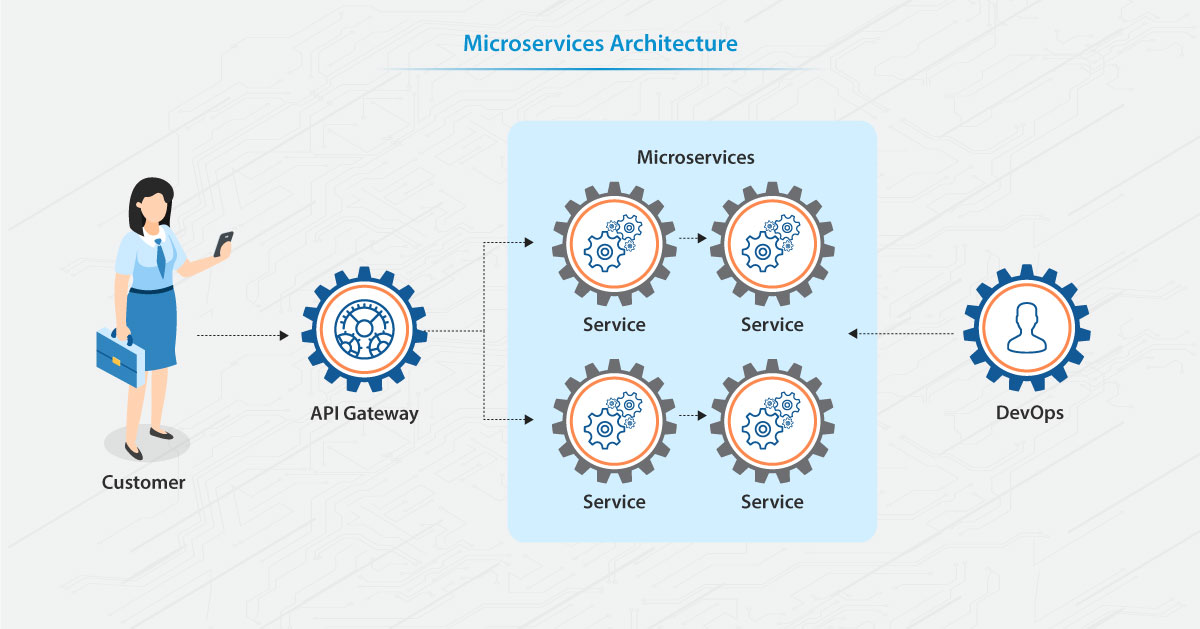The word ‘microservices’ has been getting a lot of attention recently in the tech world after several Fortune 500 tech companies decided to adopt microservices-based technologies. Google, Amazon, Netflix, and other tech leaders have successfully migrated from a monolithic architecture to microservices. But what exactly is the microservices architecture, and how can it be of advantage to you? In a nutshell, microservices is service-oriented software architecture in which server-side applications are developed by merging many single-purpose, low-footprint network services. Its benefits include better modularity, improved functional composition, decreased testing burden and environmental isolation, and increased autonomy for the development team.
The traditional unified model – the monolithic architecture – that preceded microservices, entails multiple functionalities within a single service. Although it is not all bad, the model does have its limitations in terms of handling a huge codebase, collaboration, modularity, scaling, deployment, and implementation of new changes and technology.
Coming back to microservices, this architecture consists of a collection of small, autonomous services that are self-contained. Each of these services can implement a single business capability with a collection of services that are
- Highly maintainable and testable
- Scalable and flexible
- Loosely coupled
- Independently deployable
- Organized around business capabilities
- Owned by a small team
- Updateable without rebuilding and redeploying the entire application
- Responsible for persisting their data or external state
- Communicate with each other by using well-defined APIs
- Compatible with different technology stack, libraries, or frameworks
- Capable of fault isolation

Advantages of Microservices Architecture
So, what are the reasons that are causing a shift towards microservices architecture? Let’s take a look at the advantages of the model to find out.
Agile
As this architecture is deployed independently, fixing bugs and managing feature releases is a breeze. As it contains several autonomous services, you can update them without blocking or redeploying the entire application.
Scalable
It is not always feasible to scale an entire application when only a couple of subsystems are required to be scaled. The microservices architecture addresses this issue by allowing to scale services independently. It is also possible to utilize resources more efficiently by packing in a higher density of services within a single host, with the help of orchestrators.
No Code Dependencies
Unlike monolithic architecture, the microservices architecture has no dependencies, making it easier to introduce new features, services, updates, etc. without making major changes to the code.
Flexibility
This architecture is also more flexible, allowing you to use a mix of technologies as per your convenience and requirement.
Fault Isolation
The major advantage of this architecture is that the application or platform itself remains unaffected if a single microservice goes faulty.
Data Isolation
Thanks to data isolation, schema updates are much simpler in a microservices architecture.
Components in Microservices Architecture
Besides the individual services, this model includes components such as Management/Orchestration and API Gateway.
Management/Orchestration
It helps identify failures, place services on nodes, and rebalances services. More often than not, it is a widely used technology.
API Gateway
This acts as an entry point into the services for clients. It can also perform functions like authentication, SSL termination, load balancing, logging, and more.
Challenges of Microservices Architecture
Along with the benefits, the microservices architecture comes with its own set of challenges. It is a tad more complex to develop and test, considering the application is constantly evolving. The decentralized approach may lead to the inclusion of multiple languages and frameworks. Network congestion and latency could be a problem when multiple microservices try to communicate with each other. In addition to these, extra thought needs to be given to data consistency amongst microservices, efficient management, and ensuring complete compatibility in case of updates and versioning. To make sure your application or platform based on the microservices architecture delivers the desired results, you must choose a team with the right skill set and experience to accomplish the task.
Panamax Inc., a leading provider of financial and telecom technologies, has successfully crafted the MobiFin Elite platform based on the true microservices architecture. Our tried and tested platform has already been deployed by multiple financial companies across the globe. The MobiFin Elite digital financial platform is used and preferred by many companies in the domain, thanks to our expertise in technologies like the microservices architecture. We also follow the best practices of the model to ensure the best possible results for our clients and partners looking to expand their customer base with the help of our platform. Schedule a call with us to find out what our technologically advanced financial solution can do for your business.
Related Blogs
Exploring Microfinance – One Dollar at a time
Crisis Management through Microcredit
Contributing Writer: Krati is a content creator at Panamax Inc and has over 6 years of experience in the digital domain. She holds a degree in Journalism and enjoys writing about everything tech. Krati can be found binge-watching TV shows, reading chick-lit novels and running after her toddler over the weekends.


















